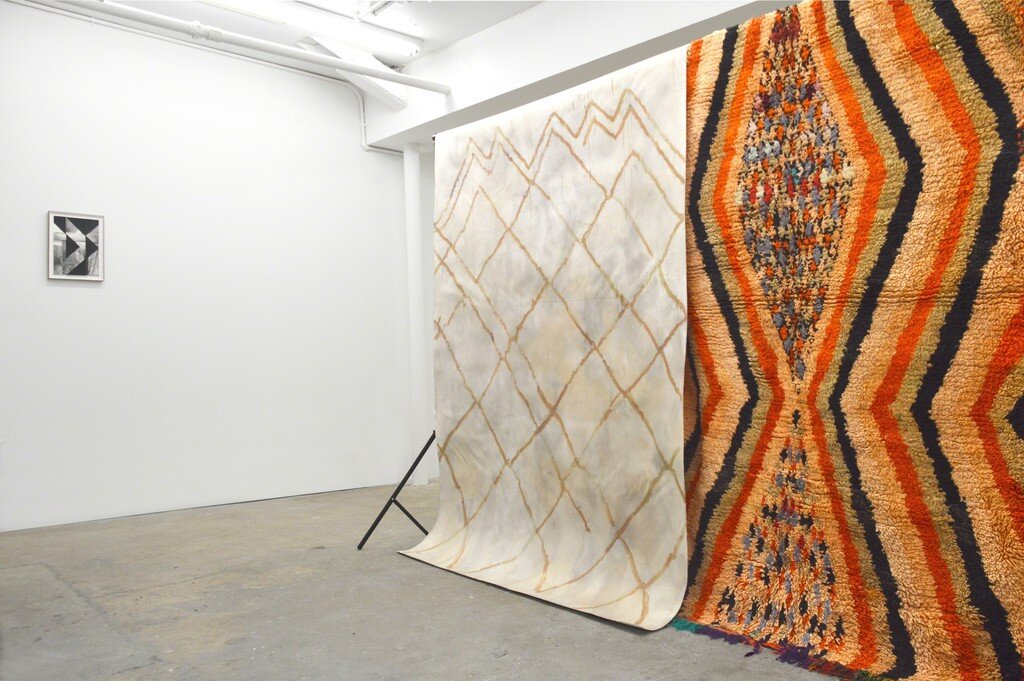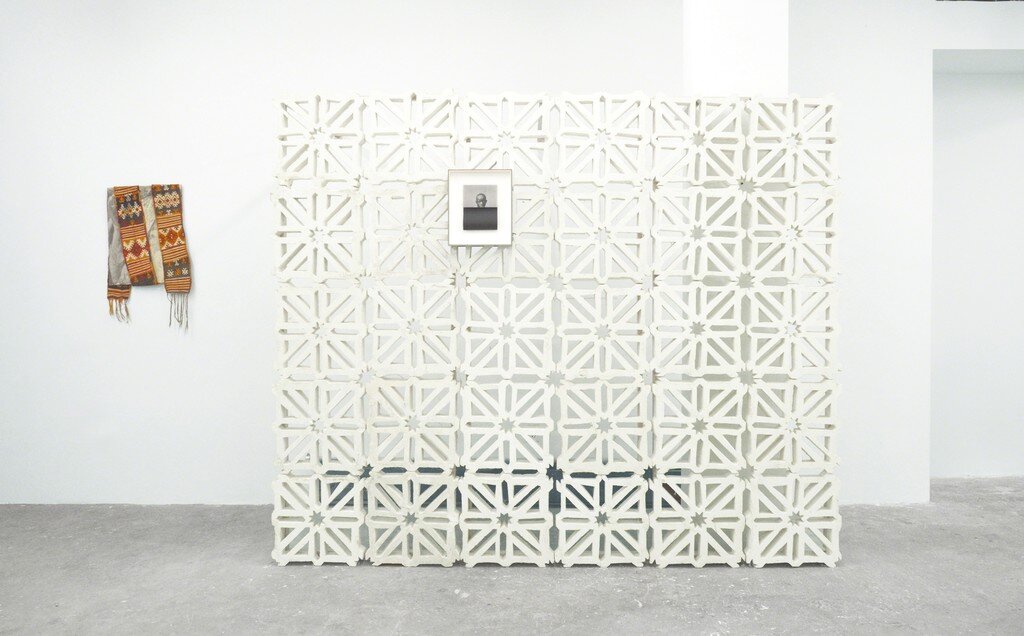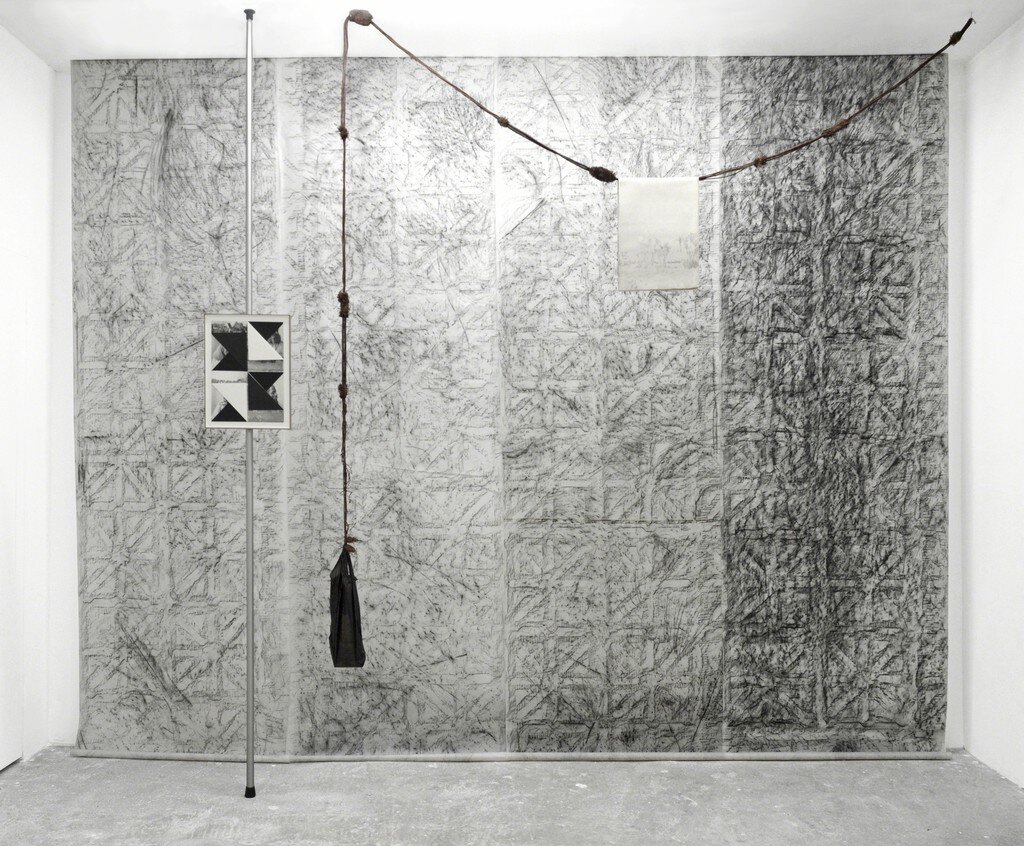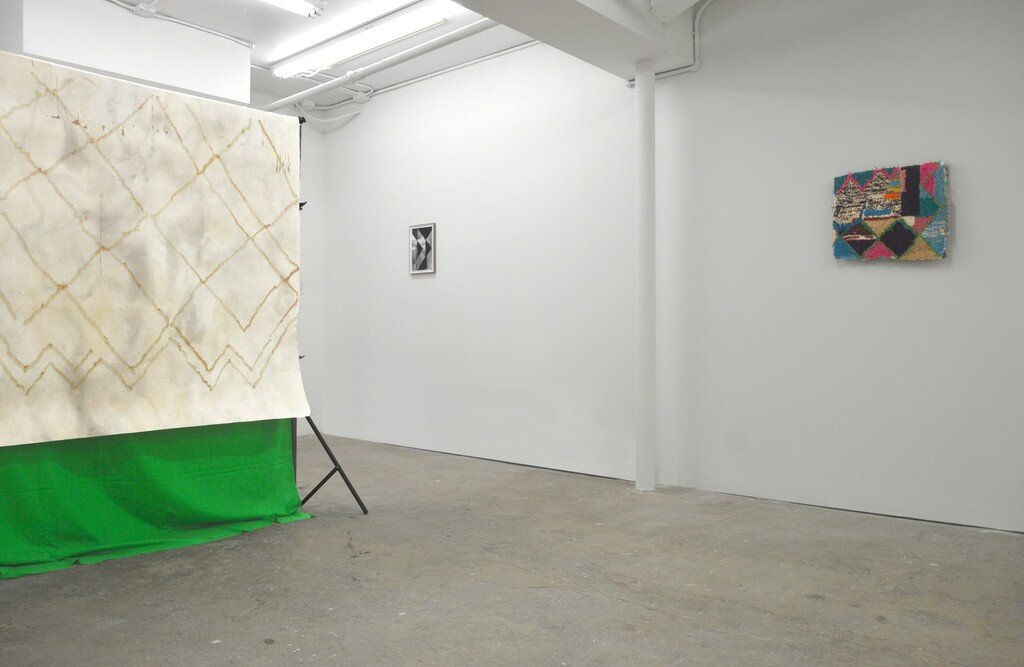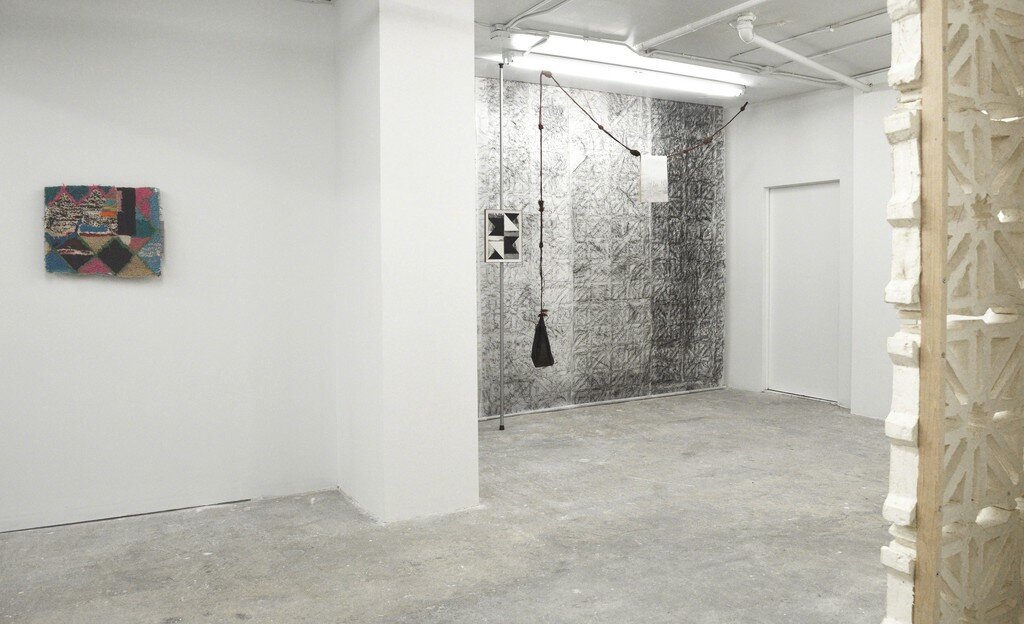Javier Arce: About how a grape may float on the ocean
November 2 – December 9, 2018
Cindy Rucker Gallery is pleased to present the second solo exhibition by Javier Arce (b. 1973, Cantabria, Spain). About how a Grape may float on the Ocean contains two bodies of work that are differently crafted yet closely related. One is a series of assemblages of traditional North African textiles and photographs based on images obtained in Tangiers by Antonio Cavilla, a photographer of Italian origin settled in that city since the late 19th century. These works are titled with the phrase by 15th-century Arab philosopher and scientist Ibn Khaldun, which also serves as the title for the exhibition. The second is a series of collages that begins with the same repertoire of Orientalist images, for it, the artist has chosen a title that reflects Spanish philosopher Santiago Alba Rico's idea: What cannot be looked at becomes an image. With its extreme technical and visual concision, Javier Arce's work draws its complexity from intellectual references that reflect readings in a broad cultural spectrum running from philosophy to anthropology and poetry.
The pieces in this exhibition connect references from history and popular material culture to fabric design and flimsy materials, ethnographic photography and aspects of the modernist tradition. In them, he explores different registers of the changing nature of cultural flows, the hybridization and instability of cultural belonging, the unstable relation between center and periphery and the marginal histories and hegemonic discourse of Western modernity. They work with the contrast between the ethnographic data in Cavilla's images, which present a world anchored in the past, and the sophisticated economic aesthetic of the Maghreb's material culture. These works by Javier Arce simultaneously illustrate and question the geographic, political and cultural distances between Arab referents and the Western context.
The figuration in Cavilla's photographs have been partially masked among folds of cloth, folded, overlapped or half hidden behind a large lattice as metaphors for unawareness of the other, but also to propose an exercise of attention to the viewer. The effort and satisfaction of grasping these pieces involves unhurried contemplation, and this emerges as the viewer's reward: the more the viewer invests in reading the image, the more gratifying that reading will be. Javier Arce uses this partial concealment as a means of demanding attention, and to combat the anxious and instantaneous consumption of images, seeking a restful reference in the context of contemporary image consumption's escape velocity, because as Santiago Alba Rico also observed: speeding up the world is turning away from it.
Javier Arce has turned to the Maghreb in search of what he may not have found among us: fragments of colored cloth, cultural forms that become tradition, a warmth whose feel we no longer recall. A sad paradox of cartography, as the mythical Orient domesticated by colonial impulses—in this case, Northern Morocco—is precisely the West. Maghreb, in Arabic, means the place where the Sun sets, as opposed to Machreq, the place where it rises. This is a terrible confusion of meridians and parallels for a culture like the West, which dreamed of a world made to measure. Marrakech is as Western as Lisbon, and Esauira—a city of Phoenician origin that the Portuguese know as Mogador—is even more Western. There is thus no Orientalism in these images, but rather a descent to the South in search of understanding it. In one of the pieces, a fragment of a photo partially hidden behind a belt from the Atlas Mountains becomes an embrace that hides the other in order to reveal him: a sort of enveloping frame. But unlike that Western device that serves to mark the border between art and everyday life, this cloth twists around it like a serpent, embracing it like a lover to reveal even more than it hides. Javier Arce's play is serious: showing what can no longer be seen because it has lost the base of its meaning, its terrain, the surroundings in which these images once spoke. Once more, "what cannot be looked at becomes an image."
Francisco Javier San Martín. Madrid, October 2018
“El artista español Javier Arce llama a la pausa en su muestra en Nueva York”, EFE, December 8, 2018. Download PDF.

